Q: Which of these era-defining artists have played Oswego?
The Doors
Sly and the Family Stone
Bruce Springsteen and the E Street Band
The Ramones
A: All of them. And many, many more.
If you flunked that “pop” quiz, you probably didn’t go to Oswego in the 1970s.
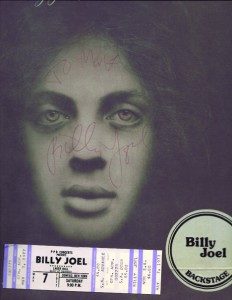
From the late ’60s into the early ’80s, Oswego drew some of the biggest names in the music business — show after show, semester after semester. The list should impress any music fan and there’s no doubt these names entertained the many who packed Laker Hall, Hewitt ballroom, Regan’s Silver Lake and other venues.“We knew that we were in the midst of historical events — history was happening right there,” remembers Mark Allen Baker ’79, an author, historian and music fanatic. His personal archive is full of signed ticket stubs, record albums and contracts that he had the bands sign.
Rock and Roll Hall of Famers The Doors, Simon and Garfunkel, Sly and the Family Stone, the Four Tops, Billy Joel, B.B. King, Bruce Springsteen, Bob Seger, The Kinks and the Ramones all played Oswego, along with several other members of bands in the rock hall. Dozens of hit makers made stops here as well.
And it wasn’t just who appeared, but when. Oswego rock and pop fans reveled in some remarkably relevant acts. “The one that stuck out the most? Pat Benatar was on the cover of Rolling Stone on Wednesday and performed at Laker Hall on that Saturday,” recalls Bill Fargo ’81, a former Student Association senator. She was even wearing the same outfit.
“It’s just ridiculously great how many people they got who were taking smaller gigs like that,” says Fargo, who still keeps a poster from the 1975 Springsteen concert on his wall.
Comedian Steve Martin was getting face time on the cover of Newsweek shortly after his 1977 performance.
Peter Gabriel, then known as former member of British rock band Genesis, played his first North American tour date of 1978 at Laker Hall. In 1973, ex-Byrd David Crosby made his first continental U.S. stop here.
The Little College That Could … Rock
“We always felt proud if we got a show that Syracuse University didn’t,” remembers Ruth Wiseman ’79, who did advertising for the Program Policy Board as a student. “We were the little guys.”
But, apparently not to concert promoters. Boston-based Don Law, who remains a major force in the industry 40 years later, formed a special bond with Oswego early on and set the stage for what would arguably become the college’s golden era of entertainment.
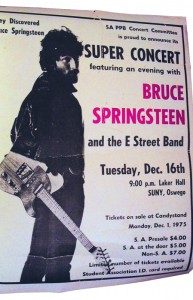
“I was in the right place at the right time,” says Ken Kohberger ’75. He chaired PPB’s Concert Committee as a student and went on to work for Law.
“A lot of it had to do with the fact that the [music] industry was still very new,” explains Kohberger, who spent most of his career as a booking agent and concert promoter. “The concert circuit was just being established.”
If an act had a night off after shows in the still-thriving constellation of Upstate cities, they would take a date at Oswego, where music-loving Lakers were sure to pack their shows.
“It was constant — after a while you just anticipated a show coming within the next month,” says Russ D’Entrone ’72, former editor-in-chief of The Oswegonian.
He got to interview some of the acts that came through.
“There is an awe factor,” he said. “You’re talking about people that you may have their album or listen to them, and here they are sitting right in front of you, in the flesh.”
D’Entrone fondly remembers Tony Butala of the 1960s vocal group The Lettermen picking him up in his Cadillac. Butala was looking for Laker Hall, so they drove over together.
The Big Time
Oswego was building its rock reputation in the late 1960s — without really knowing it.
“We did try to find groups that would attract people … that people would talk about,” says Les Von Losberg ’69, M ’70, who co-founded the Hewitt Union Board of Managers. The predecessor to the Program Policy Board that started in 1971, HUBM was responsible for much of the entertainment, which included The Doors, Simon and Garfunkel, and Sly and the Family Stone.
MORE: A Sampling of Oswego Concerts, 1967-1982
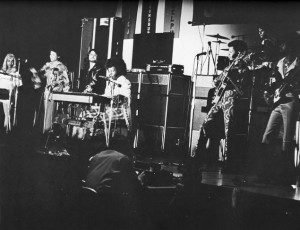
Michael Lazar ’70 took in every show he could. He became a lifelong fan of The Association after they played Oswego in 1967. “They did two shows … They were just unbelievable,” said Lazar. “We had bands that everyone else was drooling over.”Lazar, who went on to a 40-year career working with NPR at the local and national levels, conducted many interviews for use at WRVO-FM, WSGO-AM and The Oswegonian. “I still have to catalog all my tapes. I can’t even remember half the groups
I interviewed.”But it wasn’t always easy getting them here. In the early 1970s, the newly formed PPB had some difficulty getting top acts who delivered on commitments. Then-concert chair Sally O’Herin ’73 remembers how frustrated she was when a Kinks show fell through.“It was not as big a business as it is today, so it was really hit-or-miss,” O’Herin says. “They’d find more money at another gig or change their tour.
“It really depended on who was touring and how much they were asking for,” she says. One of her favorite memories is chauffeuring singer-songwriter Richie Havens during his 1973 Oswego stop.
By the mid-1970s, Oswego had grown a knack for grabbing premiere acts. Big and rising stars David Crosby, B.B. King, Dave Mason, The Marshall Tucker Band, Don McLean and Billy Joel (his second time here) all appeared at Oswego during the 1973-74 academic year.
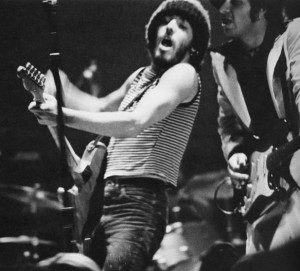
“That was what I walked into. I was blown away,” Baker says. “Here I am in my freshman year and that’s what was in front of me.”
He joined PPB’s Concert Committee as soon as he could and became a part of what he considers Oswego’s platinum decade.
“After Springsteen, things really took off … that really put us on the map,” Baker says of the Boss’s 1975 performance on the heels of his seminal Born to Run album and a Time magazine cover heralding him as “Rock’s New Sensation.”
PPB had doubled the size of the stage and invested in pipe and drape, transforming Laker Hall from gymnasium into a top-notch performance venue. “That’s how we were able to get acts like Springsteen,” Baker says.
“I didn’t know who he was. My roommate said I should go and she was from Downstate and so much more informed,” says Wiseman, who keeps a tin filled with ticket stubs from her Oswego days. “I was a lifetime fan from then on.”
Shows were cheap — just a few dollars — and the bands were huge. No wonder Laker Hall and Hewitt Union ballroom were routinely filled to capacity.
Another factor at the time was the closely shared music tastes among students. “It’s a coming of age and this [rock] was the genre that was holding everything together at the time,” said D’Entrone.
MORE: Oswego’s Jazz Rep Is ‘Solid’
By 1977, the concert committee was deciding between superstars. Baker recalls the difficult choice between the chart-topping Steve Miller Band or soon-to-be-huge Billy Joel.
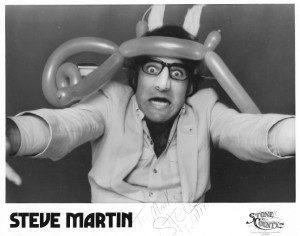
“We knew he was going to break big. I mean really big,” said Baker of Joel, who was already well-known.
They went with Joel, whose quintessential The Stranger was released that year. The show and the album were smash hits.
That type of foresight is what made the decade so compelling, Kohberger says. “The majority of them you turn on the radio, they’re still playing and some of them are still touring,” he notes.
Songs will often trigger Kohberger’s treasured memories of producing shows, like the time he presented Joel with a birthday cake and champagne on stage at the 1974 gig.
Baker remembers shooting hoops with Bob Seger — then a budding superstar on his Night Moves tour — before his set in Laker Hall.
“It was amazing to watch them set up for the concerts,” recalls Marcia Thompson-Young ’81, who was a PPB treasurer. Soundchecks were always a favorite for her and fellow PPBers.
It was common to have close encounters with the stars before their performances. Howard Gordon ’74, M ’78, remembers going with a group of other students to pick up soul singer Patti LaBelle and her group from the airport.
The Kids Are Alright
The completely student-fueled PPB was responsible for the streak of success. “We had a great group of people who were involved,” says Wiseman. “Everybody took their jobs very seriously.”
“From promotion to production, our team was so good at what we did — that’s why we were able to accomplish what we did,” says Baker. “We felt like we would be letting our classmates down if we didn’t put on a good show.”

PPB had earned its independent status with a sterling reputation not only for putting on a good show, but for putting it on professionally and responsibly, Fargo says. The Student Association and administrators were pretty much hands-off and entrusted the PPB, which also provided movies and other programming, with a respectable chunk of funding.
Programming contributions came from music professors and other student organizations. The Black Student Union, for instance, helped draft acts for the annual Black History Week that included The Four Tops; War; Earth ,Wind and Fire; and Patti LaBelle.
“Those were people that we were not just hoping to see, but people we were advocating for,” says Gordon, a former member of both the BSU and PPB. “These were artists, performers
and lecturers we thought everyone should see.”
The BSU’s influence also brought icons like Muhammed Ali to campus in the early 1970s, one of Gordon’s most treasured memories.
PPB thrived into the 1990s, when it was replaced by the Student Association Programming Board. The great shows continued over the decades, but the years in and around the ’70s were unique.
It was a time that ensures students from any era can proudly proclaim “Oswego rocks!”
You might also like
More from Featured Content
Vision for the Future
VISION for the Future Peter O. Nwosu began his tenure as the 11th president of SUNY Oswego, building on the solid …
Envisioning the Potential in All Students
ENVISIONING the Potential in All Students Educator donates $2 million in recognition of his Oswego education, in support of future teachers Frank …
A Vision of Support
A VISION of Support Award-winning principal makes an impact on her school through her positivity and commitment When Nicole Knapp Ey ’02 …







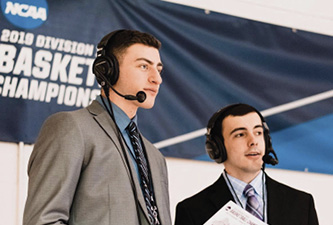

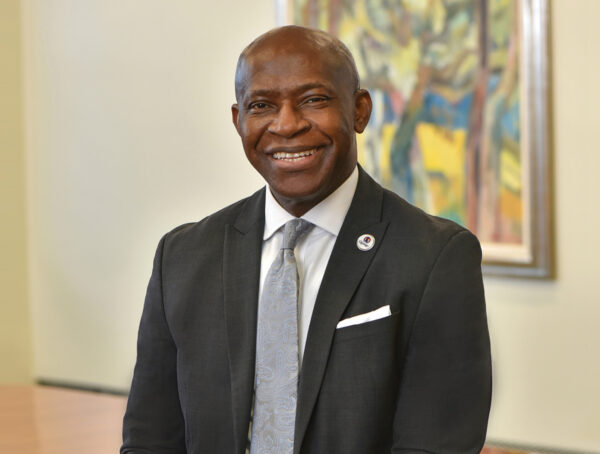


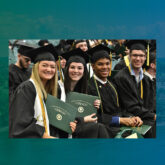

29 Comments
I worked with Mark and others on the stage crew in “77, ’78 and ’79 . What an experiance . Made friends with the roadies in The Charlie Daniels Band and the road manager ” Skinner ” Tey loved that my nickname “Bear”.
Does anyone remember how loud and annoying Hot Tuna was?
Worked the Peter Gabriel DIY tour . If anyone remebers we have to map out all the eqipment as they unloaded the trailers b/c it was the 1st night of the tour .Gabriel hid in the back of Laker Hall and came out singing shining a flash light in his face . One other memory is working like dogs to unload 4 trailers for Boston , set up the stage olny to tear it back down b/c Brad Delph had lost his voice in Syracuse the night before . Good Times !
“Bear” was part of the best crew ever and the reason why we were so successful!